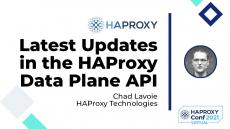- February 2025 (1)
- January 2025 (2)
- December 2024 (1)
- November 2024 (5)
- October 2024 (4)
- September 2024 (3)
- August 2024 (4)
- July 2024 (6)
- June 2024 (1)
- May 2024 (4)
- April 2024 (1)
- March 2024 (2)
- February 2024 (1)
- January 2024 (1)
- December 2023 (4)
- November 2023 (3)
- October 2023 (5)
- September 2023 (2)
- August 2023 (3)
- July 2023 (5)
- June 2023 (2)
- May 2023 (3)
- April 2023 (2)
- March 2023 (3)
- January 2023 (3)
- December 2022 (4)
- November 2022 (4)
- October 2022 (2)
- September 2022 (4)
- August 2022 (4)
- July 2022 (2)
- June 2022 (4)
- May 2022 (3)
- April 2022 (2)
- March 2022 (1)
- February 2022 (3)
- January 2022 (2)
- December 2021 (1)
- November 2021 (3)
- October 2021 (3)
- September 2021 (2)
- August 2021 (5)
- July 2021 (3)
- June 2021 (4)
- May 2021 (5)
- April 2021 (4)
- March 2021 (5)
- February 2021 (4)
- January 2021 (4)
- December 2020 (3)
- November 2020 (5)
- October 2020 (4)
- September 2020 (7)
- August 2020 (9)
- July 2020 (5)
- May 2020 (6)
- April 2020 (2)
- March 2020 (8)
- February 2020 (1)
We are the company behind HAProxy, the world’s fastest and most widely used software load balancer. Organizations rapidly deploy HAProxy products to deliver websites and applications with the utmost performance, observability, and security at any scale and in any environment.
HAProxy One is an industry-first end-to-end application delivery platform designed to simplify and secure modern application architectures. It features a suite of products consisting of application delivery software, appliances and turnkey services managed and observed through a unified control plane. It provides load balancing, application acceleration, CDN, DDoS protection, bot management, and WAF capabilities.
HAProxy Powers the Uptime of the Cloud Era:
- Load Balancing: Load balance your services at any scale and in any environment with our feature-rich application delivery controllers.
- High Availability: Deliver optimal user experiences regardless of volume of visitors, number of hits, or complexity of request.
- Application Acceleration: High performance SSL offloading, advanced timings, high performance lookup maps, HTTP compression, device detection and HTTP routing.
- Administration: Utilize HAProxy’s RESTful Data Plane API and Runtime API to manipulate your load balancer’s configuration or to drain traffic. Make changes dynamically without risking impact to other services.
- Security: Receive the benefits of SSL with less hardware, reduce the number of services exposed to the Internet, stop DDoS and Brute Force attacks, detect and block SQL/XSS attacks, ensure protocol compliance and identify intrusions with our advanced logging.
- Microservices: HAProxy is at the core of application delivery for some of the largest and most complex microservices architectures in the world and constantly releases new features to support these dynamic environments.
Powering the future of secure application delivery.






















